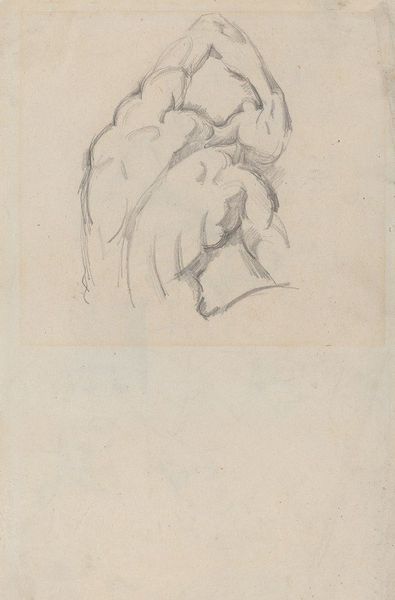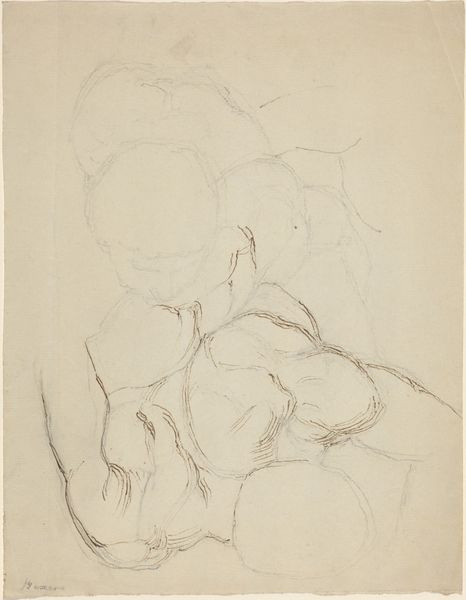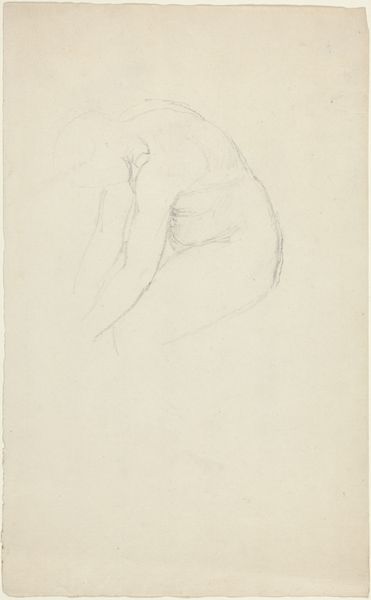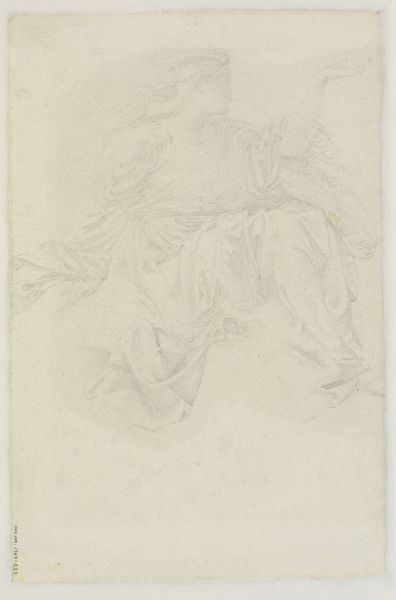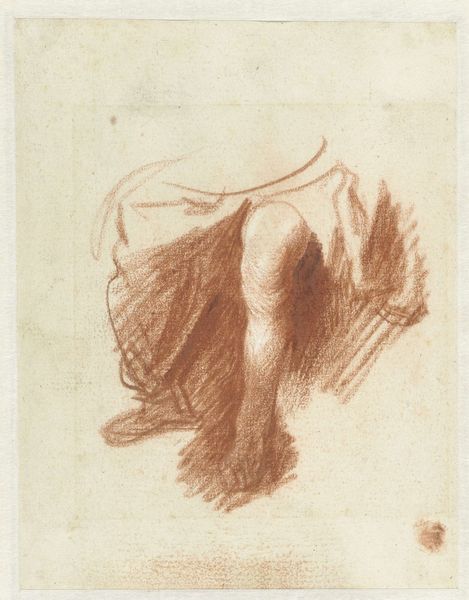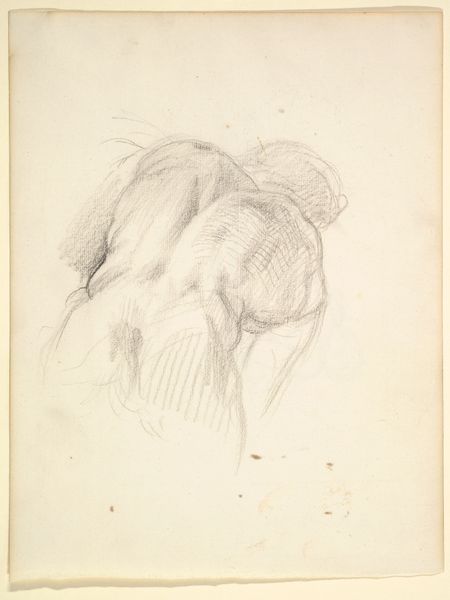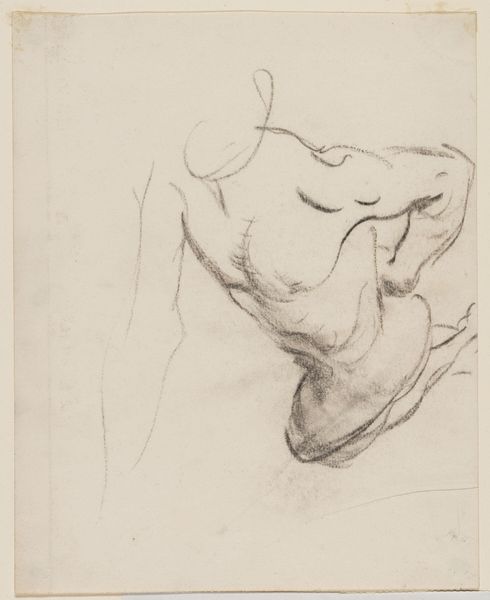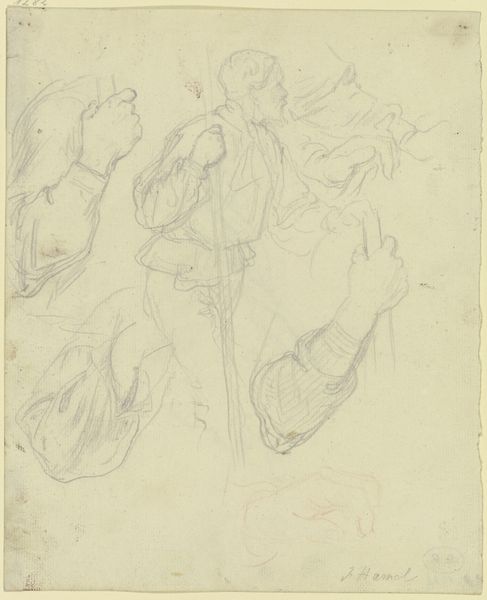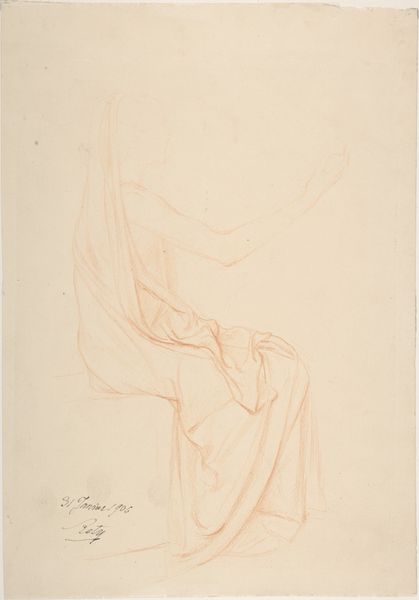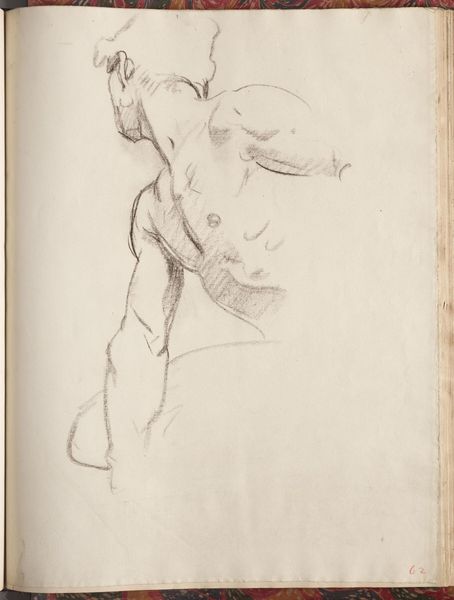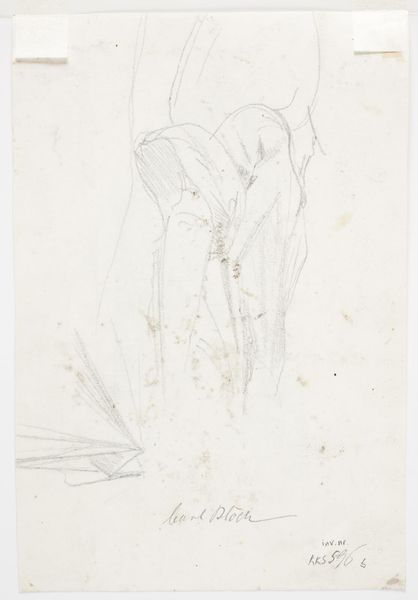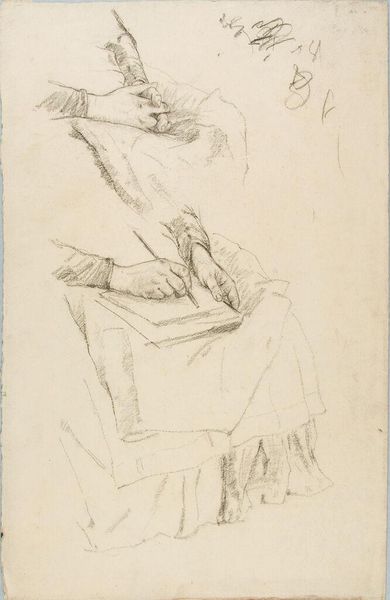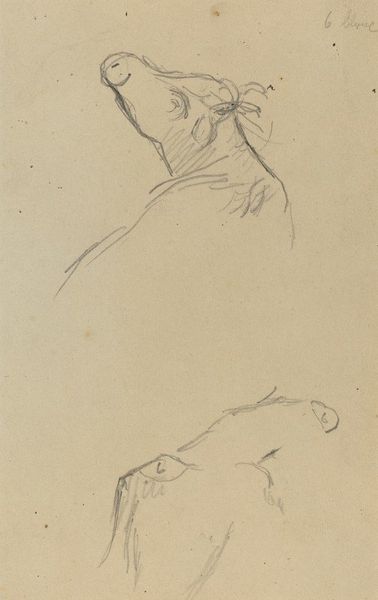
Detailstudier af en mandsfigur med sværd ved siden og lang kappe 1831 - 1852
0:00
0:00
drawing, pencil
#
drawing
#
pencil sketch
#
figuration
#
pencil drawing
#
pencil
#
portrait drawing
#
history-painting
#
academic-art
Dimensions: 232 mm (height) x 169 mm (width) (bladmaal)
Editor: This is "Detailstudier af en mandsfigur med sværd ved siden og lang kappe," a pencil drawing by Dankvart Dreyer, created sometime between 1831 and 1852. The sketch is delicate, almost hesitant, but there’s also something quite powerful about the figure suggested. How do you interpret this work? Curator: Immediately, I'm drawn to how this "study" – and studies, in general – functioned within a specific historical and social framework. Think about 19th-century academic art, and its relationship to power. These meticulously rendered details weren't simply exercises in technique; they were building blocks for narratives that often reinforced dominant ideologies. Editor: So, like how historical paintings might validate national myths? Curator: Precisely. And the emphasis on male figures, often depicted with weapons or symbols of authority, underscores patriarchal structures. But let’s also consider the fragility of the pencil lines, the incompleteness of the form. Does that introduce any ambivalence into the reading? Can we see this not as an affirmation of power but, potentially, as a questioning of it? Editor: That’s a great point. It makes me consider that Dreyer perhaps was grappling with representation itself. Curator: Exactly! Consider how the art world was dominated by male figures; where did artists from marginalized backgrounds stand? This “detailstudier" perhaps subtly questions the dominant narrative by leaving space for alternative viewpoints. So, looking at it now, what does the image evoke for you? Editor: I see more layers of complexity in what I originally thought was a straightforward historical sketch. It's a glimpse into not just artistic technique but also the underlying societal power dynamics. Curator: Yes, and how these sketches were not merely technical exercises but crucial ideological groundwork. Food for thought.
Comments
No comments
Be the first to comment and join the conversation on the ultimate creative platform.
